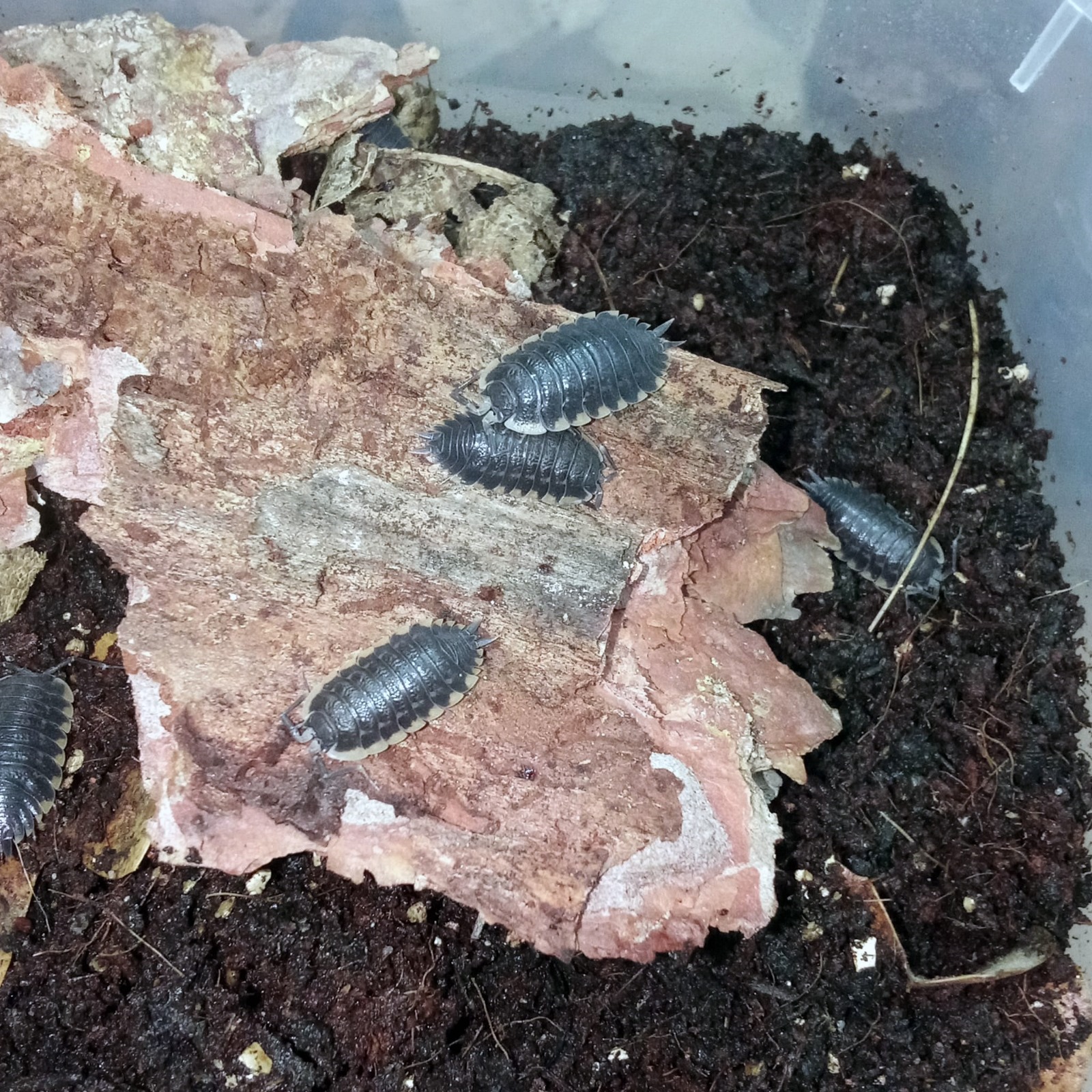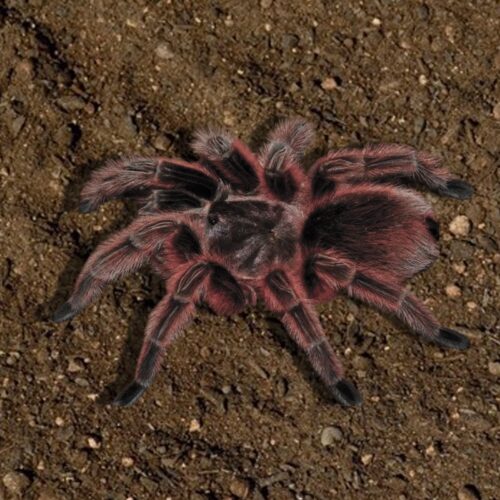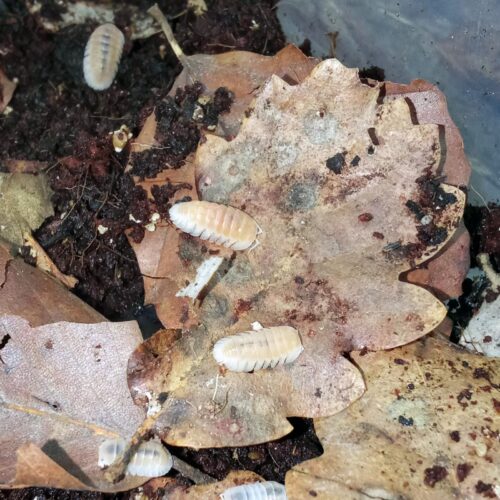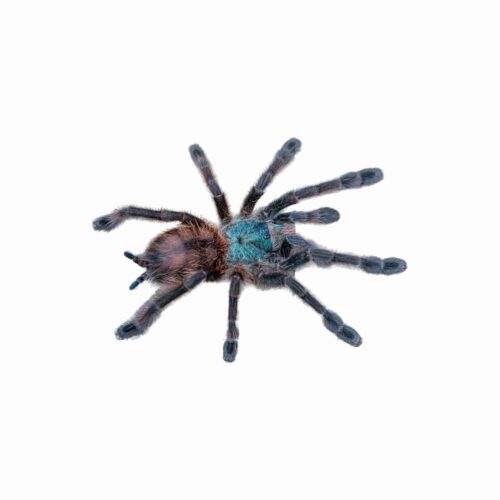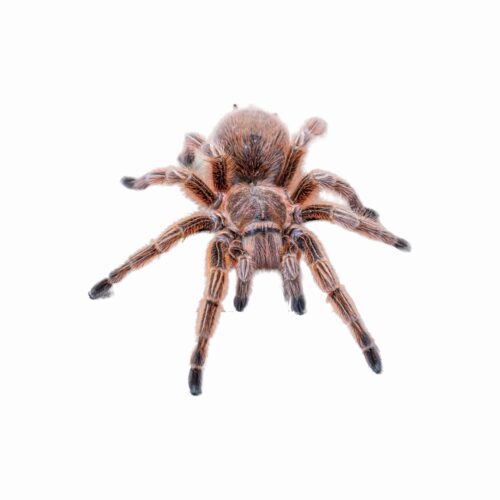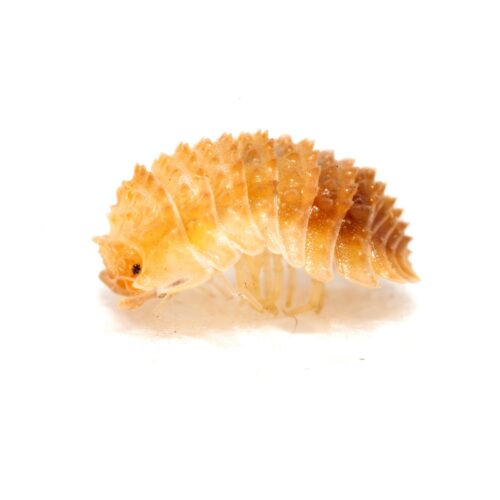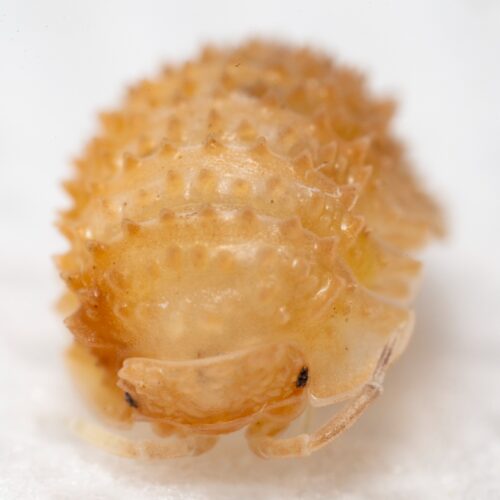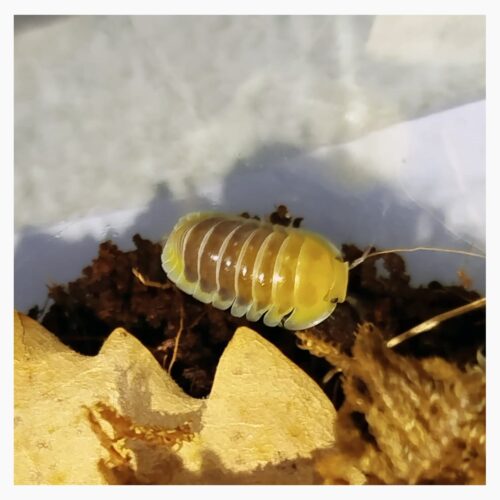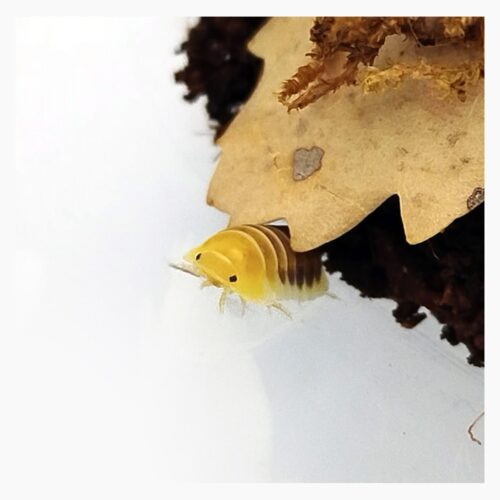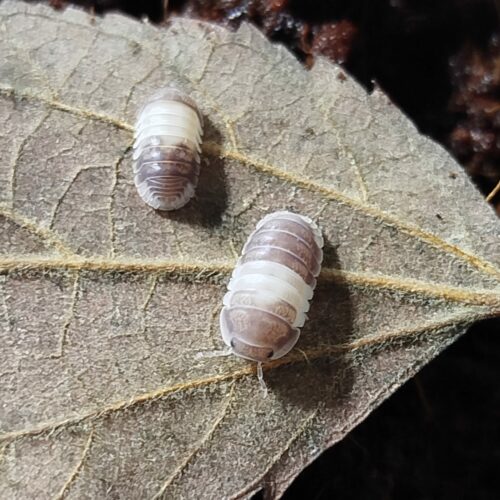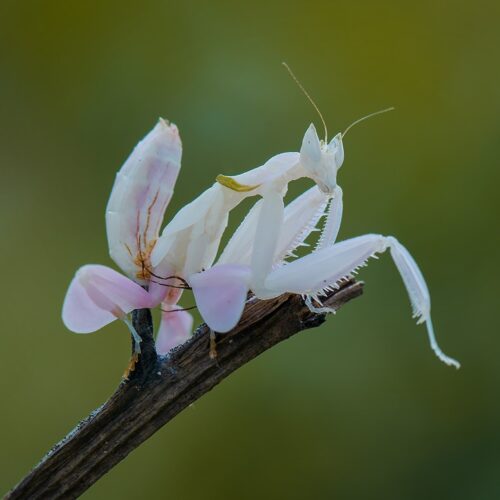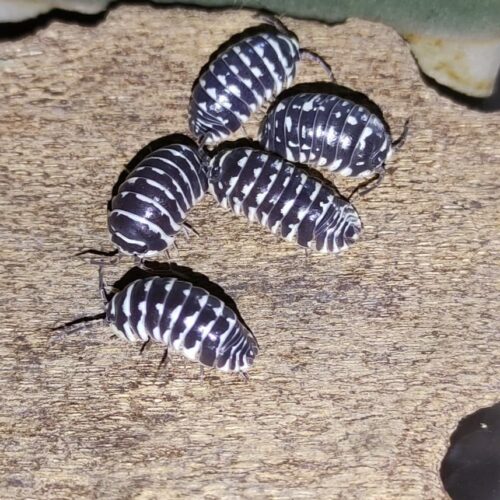Trachelipus caucasius
3,00€ – 12,00€
Discover Trachelipus caucasius! 🐜 A hardy isopod, perfect for bioactive terrariums. It feeds on decaying matter, keeps the substrate clean, and is easy to care for. A great choice for invertebrate lovers! 🌿
Technical Sheet: Trachelipus caucasius
Scientific Name: Trachelipus caucasius
Common Name: Caucasian Isopod
Family: Trachelipodidae
Origin: Caucasus regions and Eastern Europe
Description
Trachelipus caucasius is a medium-sized terrestrial isopod, with an average adult length of 10-15 mm. Its segmented exoskeleton varies in shades from brown to gray, often featuring patterns that help it blend into its environment. This species can partially curl up when threatened but does not form a complete ball like Armadillidiidae.
Habitat and Distribution
This species thrives in humid environments such as temperate forests and meadows, where it hides under stones, decaying logs, and leaf litter. It adapts well to substrates rich in organic matter and is a good indicator of a healthy ecosystem.
Diet
Trachelipus caucasius is a detritivore that primarily feeds on decomposing organic material, such as fallen leaves, rotting wood, and plant debris. It plays a crucial role in breaking down matter and recycling nutrients in the soil.
Captive Care Requirements
-
Temperature: 18-25°C
-
Humidity: 70-90%
-
Substrate: Mix of coconut fiber, leaf litter, and decaying wood
-
Hiding spots: Logs, tree bark, and stones
-
Diet: Dry leaves, fresh vegetables, and calcium supplements (cuttlefish bone or crushed eggshells)
Reproduction
This isopod species is ovoviviparous, with a moderate reproduction rate. Females carry their eggs in a brood pouch (marsupium) until the young are ready to emerge.
Compatibility and Use in Terrariums
Thanks to its resilience and ability to recycle organic material, Trachelipus caucasius is an excellent choice for bioactive terrariums, where it helps maintain substrate cleanliness. It can be kept with other isopod species and detritivores, as long as there is enough space and resources.
Fun Facts
-
Its coloration may vary depending on humidity and diet.
-
It is less likely to curl into a ball compared to other similar isopods.
-
It plays a vital ecological role in soil regeneration and plant matter decomposition.
Trachelipus caucasius is an interesting species for isopod enthusiasts and those looking for an efficient component in bioactive setups.
| Options |
1 unit ,5 units |
|---|
Related products
Caribena versicolor
there is stock
Grammostola porteri (Rosea)
there is stock
Cristarmadillidium muricatum
there is stock
Cubaris jupiter
there is stock
Cubaris panda king
Sold out
Hymenopus coronatus
Sold out
Achrioptera manga (fallax)
Sold out
Armadillidium maculatum
there is stock








